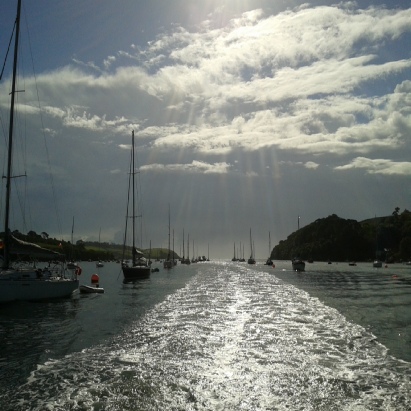
Disclaimer: The views and opinions expressed are solely representative of the contributors, and are not necessarily condoned or supported by the University of Southampton and/or the National Oceanography Centre Southampton.
Estuaries are important transition zones between riverine and marine environments. Rivers act as a major source of many elements, such that an understanding of the cycling of said elements is crucial in examining marine budgets (Dyer, K.R. 1997). The Fal estuary is characterized by elevated metal concentrations and hypernutrification. We collected data on the following parameters: biological data, consisting of phytoplankton samples and zooplankton tows; physical data on the temperature and salinity structure; chemical data including dissolved oxygen, nitrate and phosphate, silicon and chlorophyll.
Samples were taken from the R.V. Bill Conway at 7 different stations along the estuary; starting at the riverine end and working South down Carrick Roads until Black Rock. CTD data was recorded at each station using a rosette of 8 Niskin bottles, fired at 3 different depths. Additionally, water samples were taken at each of the 3 different depths for analysis in the lab of dissolved oxygen, chlorophyll, silicon, nitrate and phosphate and phytoplankton the following day. ADCP transects measuring the current flow were completed at each station enabling us to calculate the Richardson number. At stations 1, 4 and 7, a zooplankton tow – using a 200μm net – was undertaken to record species and abundance was conducted.
Figure 1: Map showing location of the 7 stations along Carrick Roads. Created using Google Maps.
